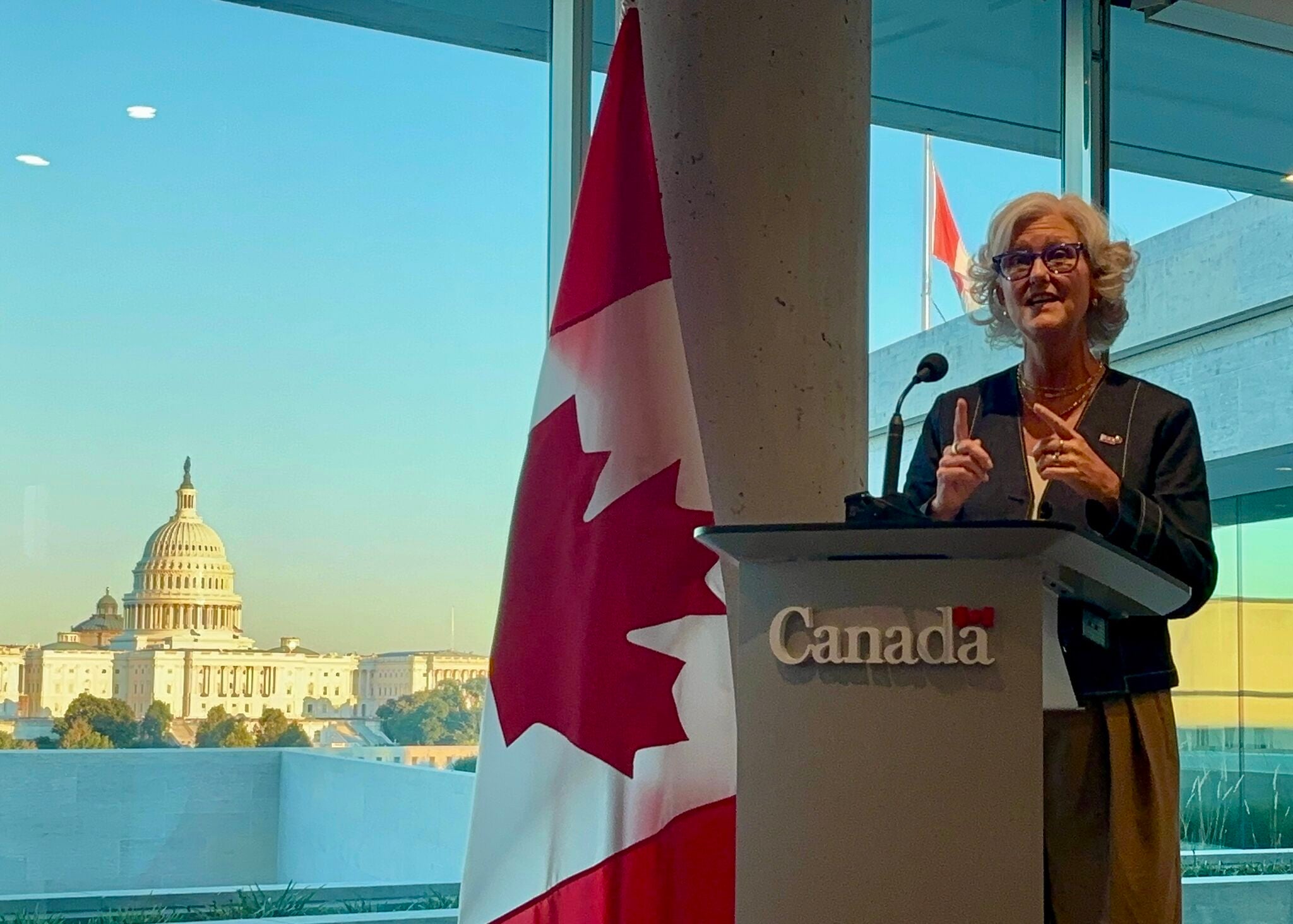Transcription of Lori Kerr's speech as part of the G7 Development Ministerial Meeting at the World Bank Annual Meetings.
G7 Development Ministerial Meeting
Date: Friday, October 17, 2025
Location: World Bank Headquarters
Speaker: Lori Kerr, CEO, FinDev Canada
[Check Against Delivery]
Thank you, Minister Sarai. Good afternoon, distinguished guests and colleagues.
At the G7 Leaders' Summit in Kananaskis, important commitments were made. These include mobilising private capital, developing quality infrastructure, and strengthening global critical mineral supply chain resilience.
We also heard a call for new partnerships. Partnerships that create impactful change at-scale.
As our Prime Minister said in Kananaskis, “Canada is ready to create new partnerships and… lead member nations into a new era of global cooperation.”
I have been inspired this week. Inspired by both the breadth and depth of the conversations. Conversations that are leading to action. Conversations that mean new ways of working together across the development finance ecosystem.
In a world of limited fiscal resources yet unlimited global development challenges, we recognize the urgency – and opportunity – to leverage all parts of the system – in-country partners, donor agencies, multilateral development banks, AND bilateral development finance institutions.
We are proud to be part of a broader ecosystem working to unlock private sector-led growth in emerging markets and developing economies.
As bilateral DFIs, we contribute to shared goals – economic growth and resilience, environmental action, and social progress.
Our distinct mandates, nimble instruments, and trusted bilateral relationships offer complementary value within this system – value that holds significant potential and is ripe to be further leveraged.
Together with our multilateral partners, we’re investing not just in the markets we serve, but in the future and in shared prosperity.
I’m pleased to share today how the G7 bilateral DFIs have come together under Canada’s G7 leadership.
Private capital mobilisation is at the core of our G7 DFI strategy. We have delivered coherent sectoral workstreams on infrastructure and energy, critical mineral security and development, and sustainable food systems.
Under the energy and infrastructure workstream, I am pleased to share that yesterday Minister Sarai launched the G7 Infrastructure Investment Council.
The Council brings together the bilateral DFIs with 12 of the world’s leading institutional investors. Together we will increase private investment in emerging market infrastructure.
We are joined by Actis, Allianz, Blackrock, Brookfield, Copenhagen Infrastructure Partners, Macquarie, Mirova, Mizuho, Natixis, Ninety-One, Nuveen, and SunLife.
We have heard from investors. They seek an established and enduring structure to engage with the G7. And they want to increase collaboration with the bilateral DFIs.
And for DFIs to accelerate infrastructure deployment, we need more effective and efficient ways to work with investors.
The Council is structured to seize these opportunities.
The Council is practical and pragmatic, focused on the design and deployment of investment vehicles.
It will also feed-back to the G7 perspectives and advice on G7 development finance priorities.
The launch of the G7 Infrastructure Investment Council is “new partnership in action.”
Regarding critical minerals, we recognize the strategic importance of the G7 critical minerals agenda.
Ensuring a sustainable supply of critical minerals for new energy, advanced technologies, and defense capabilities is increasingly central to global economic resilience and long-term prosperity.
As demand accelerates, new investments are required to secure and diversify supply chains. However, there are structural challenges.
These include policy uncertainty, application of safeguards, energy and infrastructure gaps, and a shortage of skilled labor.
Under this workstream, we recognise that G7 DFIs have different mandates. Not all are actively involved in extractives and mining. So, we have taken a broader view – beyond production and processing, to explore the role of DFIs within critical minerals supply chains.
Adjacent infrastructure to enable critical mineral development offers significant potential for action for DFIs. To support operational needs – water, energy, telecommunications. And on the transportation side – rail, roads, and ports.
We also recognise the importance of working with our MDB partners across critical mineral supply chains.
To close where I began, we have entered a “new era of global cooperation.”
Under Canada’s G7 presidency, we have made important progress as bilateral DFIs. And I would like to thank Ministers from all G7 member countries for the incredible commitment and collaboration of your DFIs over this past year.
Thank you.
